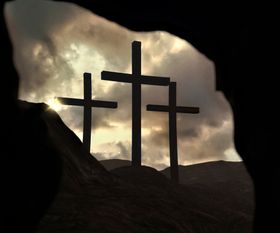Who Were the Three Wise Men in the Nativity Scene?
Published April 28, 2025

The well-known story of Jesus' birth in Bethlehem only scratches the surface of larger meaning in which the mysterious three wise men play an important role. Different cultures have referred to them as wise men, kings, magi, and much more.
The facts about the magi from the East are intriguing, and this article delves into the details we know about the identities and stories surrounding them.
Where Did the Three Wise Men Come From?
Each of the kings came from different places with different cultures, and they all brought unique gifts for Baby Jesus. The magi are mentioned only in the Gospel of Matthew 2:1-12, and it is unclear how many of them there were, but tradition maintains that the names of three of these men are Balthasar, Melchior, and Gaspar.
- Balthasar Balthasar, typically depicted with a purple cloak, was the ruler of Tarsus/Macedonia and Egypt. His gift to Baby Jesus was Myrrh, a fragrant resin commonly used in perfumes.
- Melchoir Melchoir, adorned in gold, was the Ruler of Arabia. Like his garb, he gifted Baby Jesus with Gold.
- Gaspar Also known as Caspar, Gaspar, dressed in jeweled green clothing, was the King of Sheba. He presented Baby Jesus with the gift of Frankincense, another aromatic resin used in perfumes.
What Does the Bible Say About the Three Wise Men?
The exact number of wise men varies culturally. Scholars are thought to have arrived at the number of three because of the three gifts that were mentioned. However, in Eastern traditions, it is believed that as many as twelve wise men came to Bethlehem to meet Jesus.
The same disparity is evident in their exact arrival. In many traditions, it is believed that the wise men from the East visited around 12 days after Jesus' birth. Epiphany, or Three Kings' Day, is one of the oldest celebrations in Christian history (think of The Twelve Days of Christmas).
A more accurate time for their arrival, however, may have been up to two years later. They had far to travel, and their modes of transportation were animals. Melchior came on horseback, Caspar by camel, and Balthazar rode in on an elephant. This could also connect to King Herod's order of all infants two years or younger to be killed.
Are the Three Wise Men the Three Fools?
A typical take is that the magi were wise because they were astrologers or priests. However, royal courts during these times often viewed magi as servants. The wise men in the bible were not necessarily wise, and it was not their wealth that enabled them to visit Jesus. It was of their own volition that they sought Him out, and that is what made them wise.
Is It True That There Was a Fourth Wise Man?
A fourth magus made an appearance in texts between the fourteenth and fifteenth centuries, joining three European men. There are also numerous artworks depicting the magi as feminine. Like other factors, this point is unclear and varies from culture to culture.
How Much of the Christmas Story Is True?
The only places that discuss the details of Jesus's birth are Matthew 2 and Luke 2, which makes it difficult to draw a definitive answer. Typical nativity scenes and short stories of the birth of Jesus show three wise men at a stable. However, Matthew 2:11 states that they found Mary and Jesus staying in a house, and this would most likely be much later after His birth.
Furthermore, early biblical descriptions tell of how Jesus was born in a cave, moved to a stable, and then to a house, where the three magi would have eventually visited.
Three Men Celebrate the Birth of Hope
The nativity story allows us to connect with the birth of Jesus in a beautiful way, no matter its details. But the more complex and untold stories of the Three Wise Men show us that it is not the local royalty or well-read elders who had the honor of meeting Jesus first, but outsiders in a foreign land, seeking meaning and showing humility in the face of the divine.
Despite the cultural differences between local versions of the story, they all resonate with the same theme of hope.







